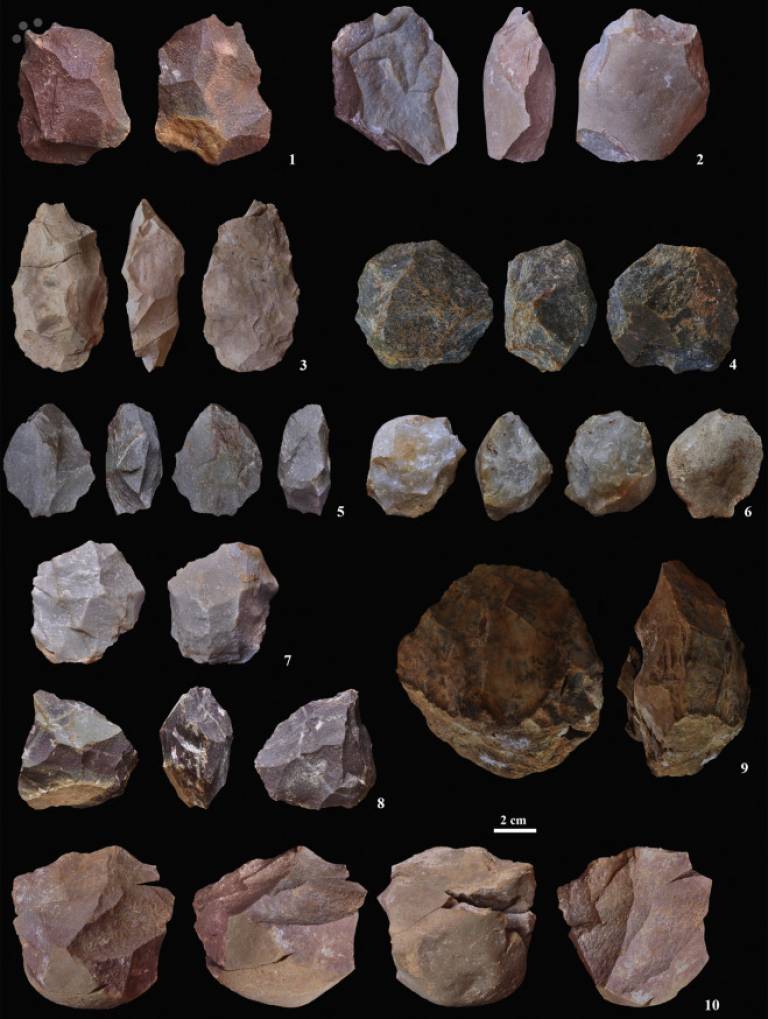A 400,000-year-old Acheulean assemblage associated with the Aroeira-3 human cranium (Gruta da Aroeira, Almonda karst system, Portugal)
22 September 2018
Bifaces dominate the Acheulean stone tools recovered during the archaeological excavation of layer X of Gruta da Aroeira, dated to 389-436 ka.
 Faunal remains and a human cranium were found in association with this lithic assemblage. The raw materials used are mostly quartz and quartzite cobbles available in the vicinity of the site. Technological and systematic analysis shows that there are no Levallois elements and suggests that on-site knapping consisted of the reduction of centripetal cores. Flake cleavers are absent. Use-wear analysis indicates the processing of hard materials, mainly wood. Gruta da Aroeira represents one of the few Middle Pleistocene sites that provide securely dated diagnostic human remains and associated Acheulean lithics, thus representing a major step forward in our understanding of the variability of westernmost Europe's Acheulean and of the human populations that made it.
Faunal remains and a human cranium were found in association with this lithic assemblage. The raw materials used are mostly quartz and quartzite cobbles available in the vicinity of the site. Technological and systematic analysis shows that there are no Levallois elements and suggests that on-site knapping consisted of the reduction of centripetal cores. Flake cleavers are absent. Use-wear analysis indicates the processing of hard materials, mainly wood. Gruta da Aroeira represents one of the few Middle Pleistocene sites that provide securely dated diagnostic human remains and associated Acheulean lithics, thus representing a major step forward in our understanding of the variability of westernmost Europe's Acheulean and of the human populations that made it.
A 400,000-year-old Acheulean assemblage associated with the Aroeira-3 human cranium (Gruta da Aroeira, Almonda karst system, Portugal)
Joan Daura Montserrat Sanz, Marianne Deschamps, Henrique Matias, Marina Igreja, Lucia Villaescusa, Sandra Gómez, Angel Rubio, Pedro Souto, Filipa Rodrigues, João Zilhão
DOI: 10.1016/j.crpv.2018.03.003
 Close
Close

